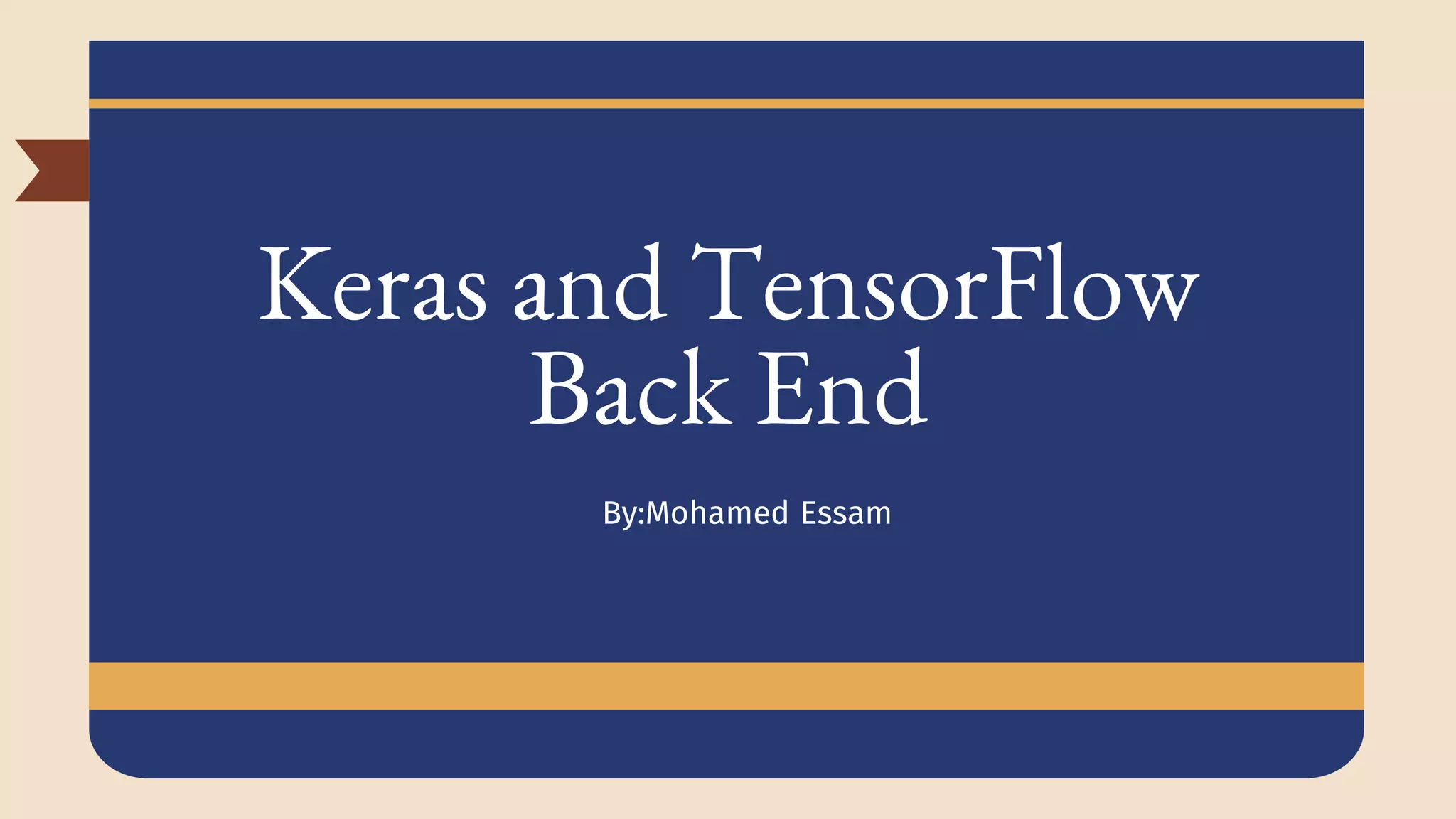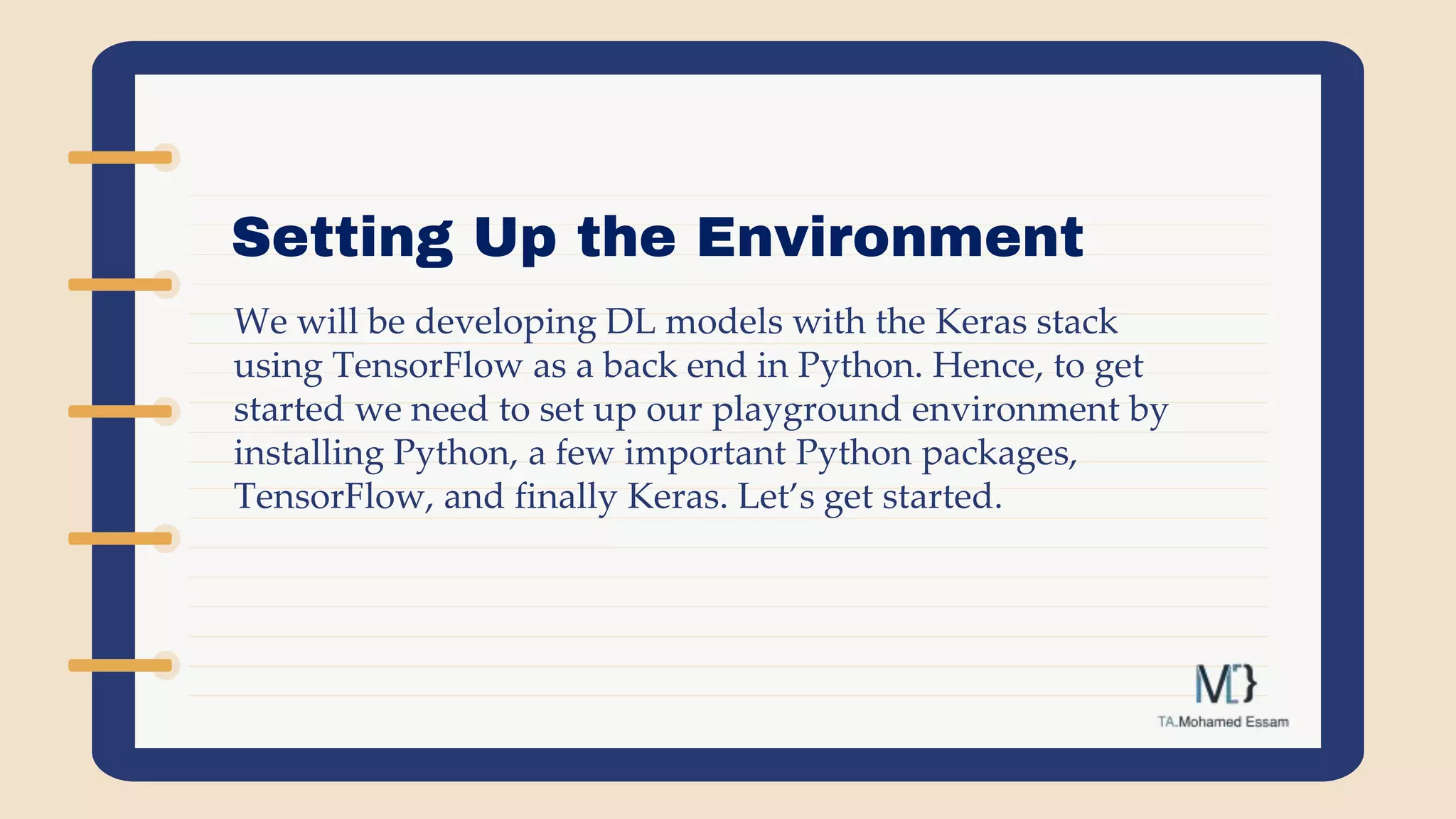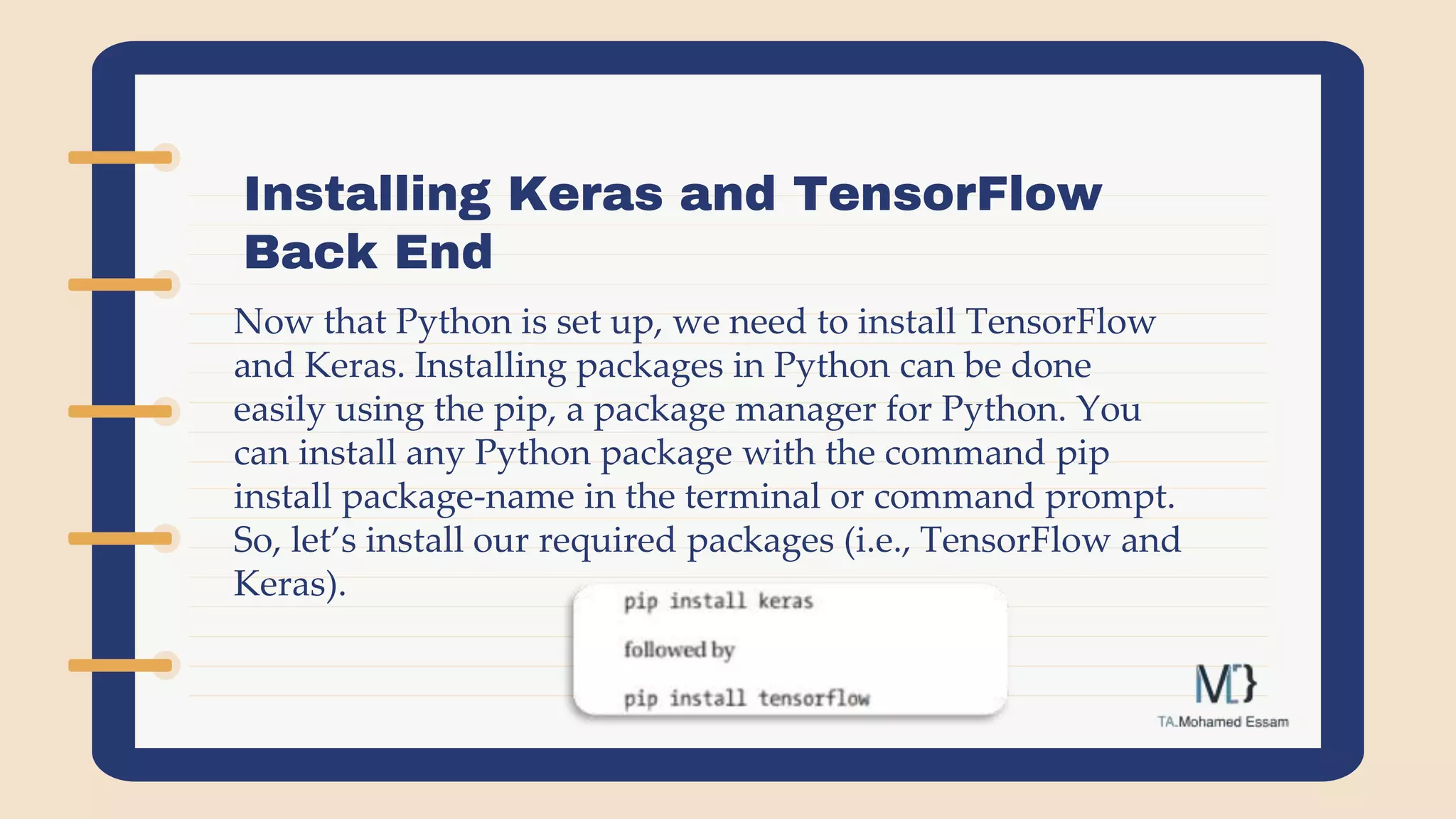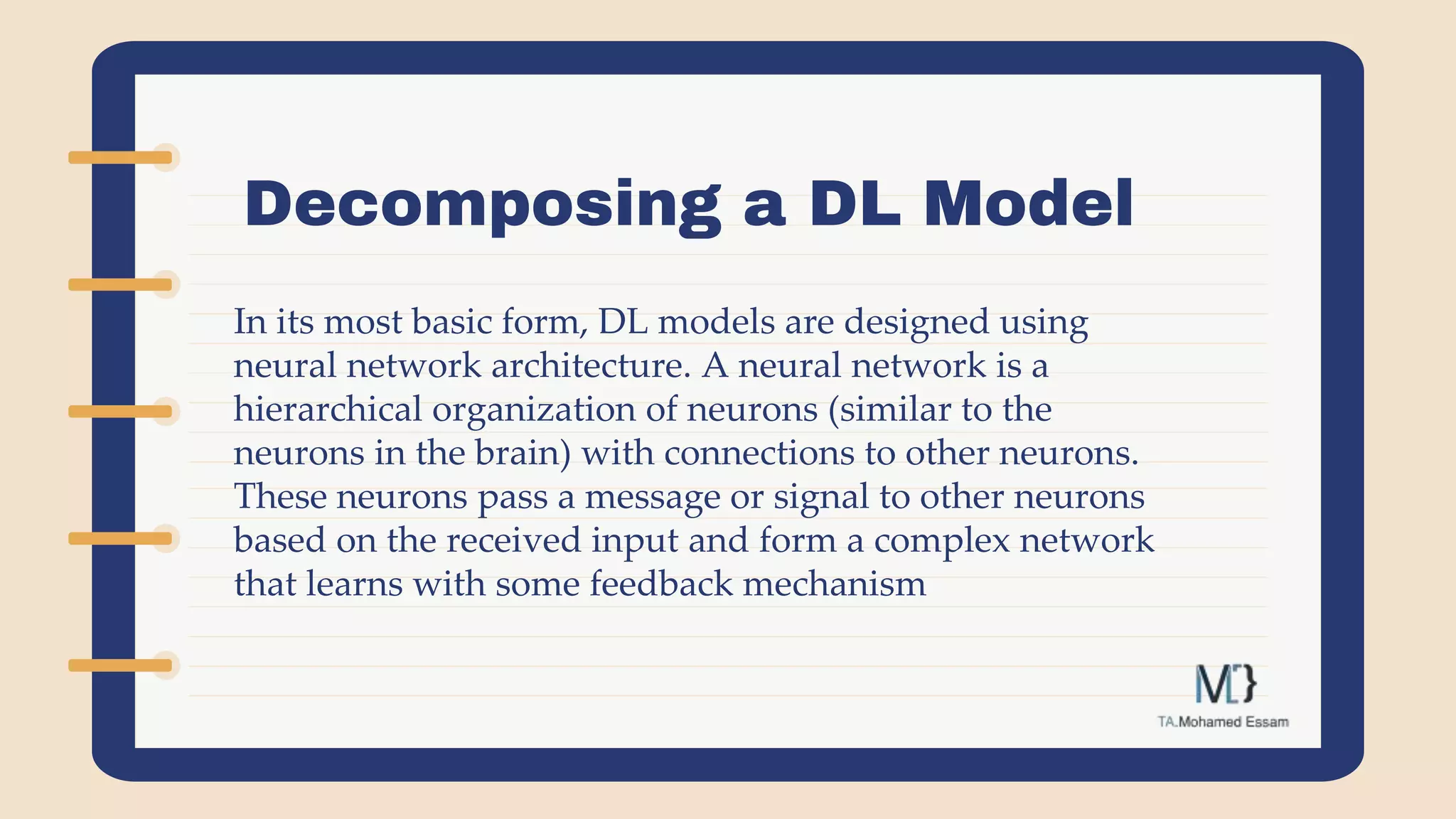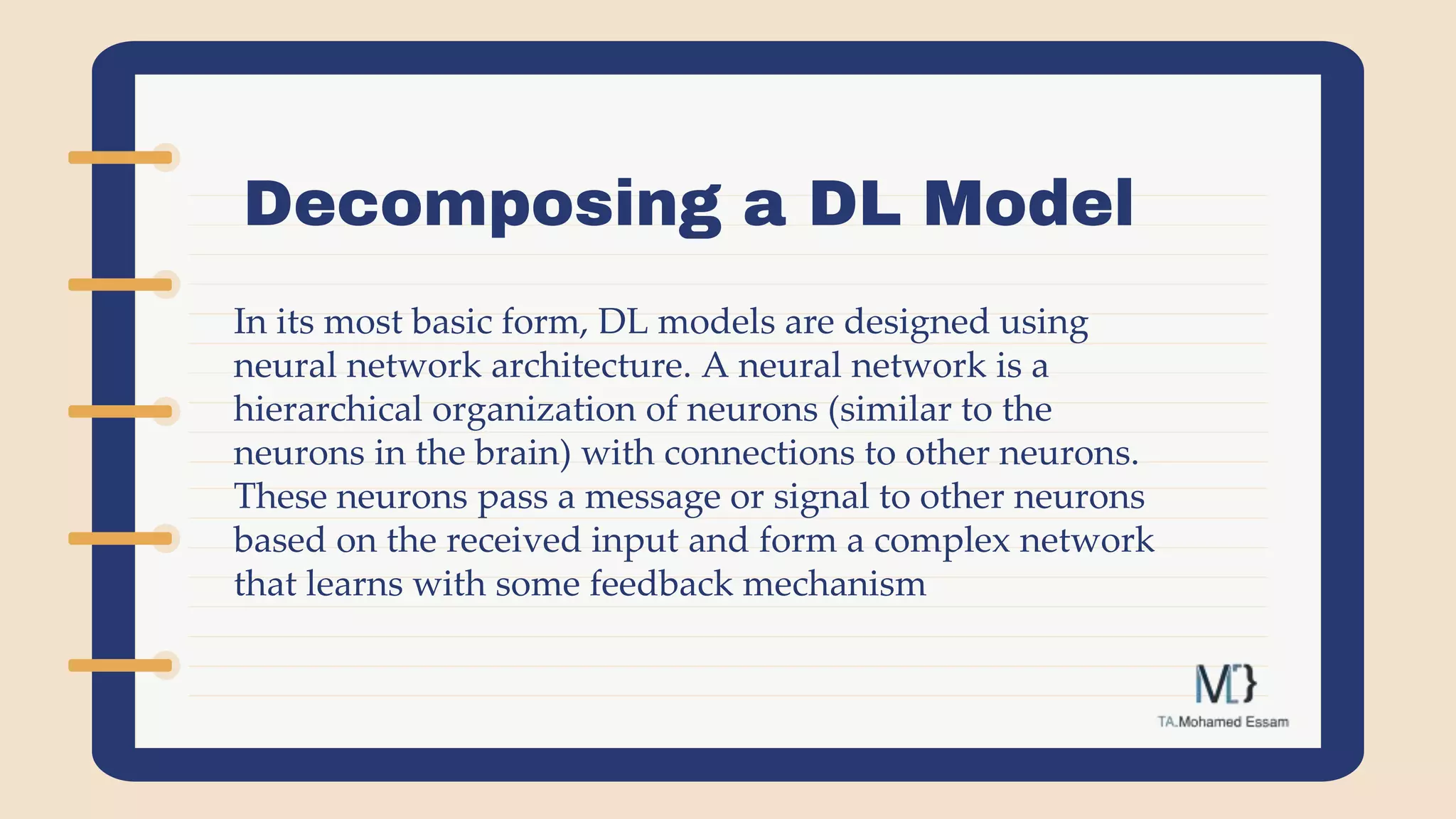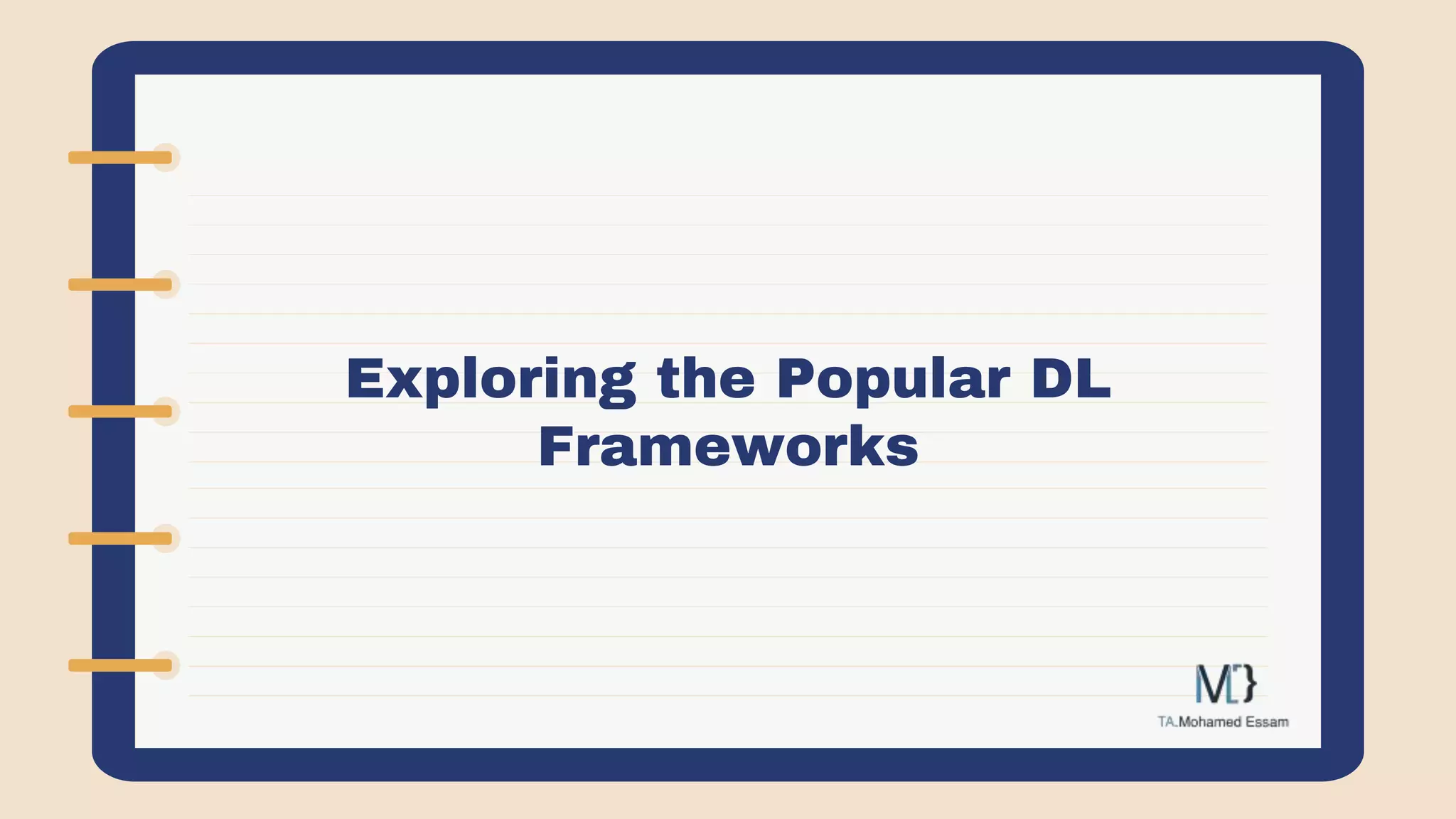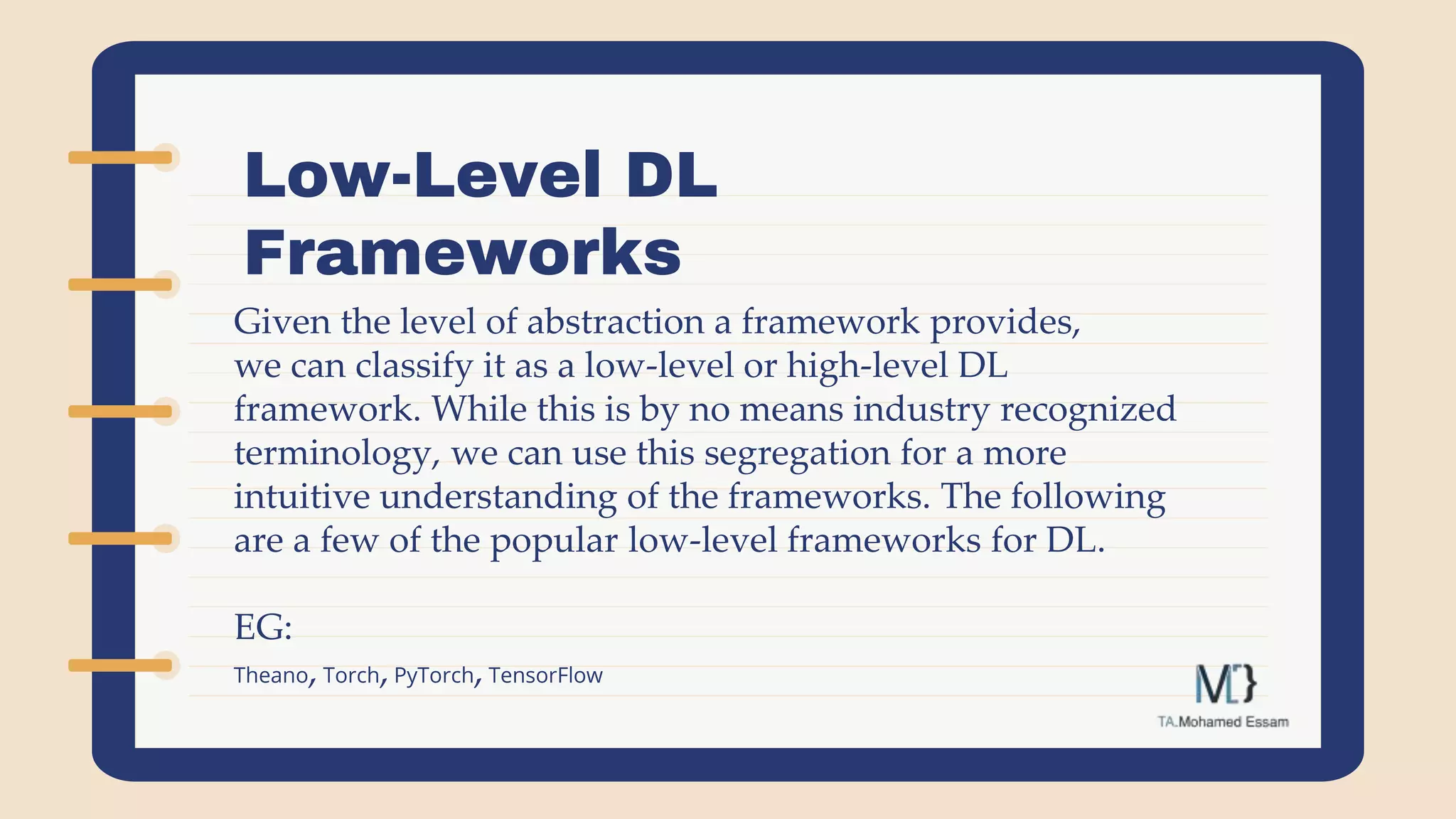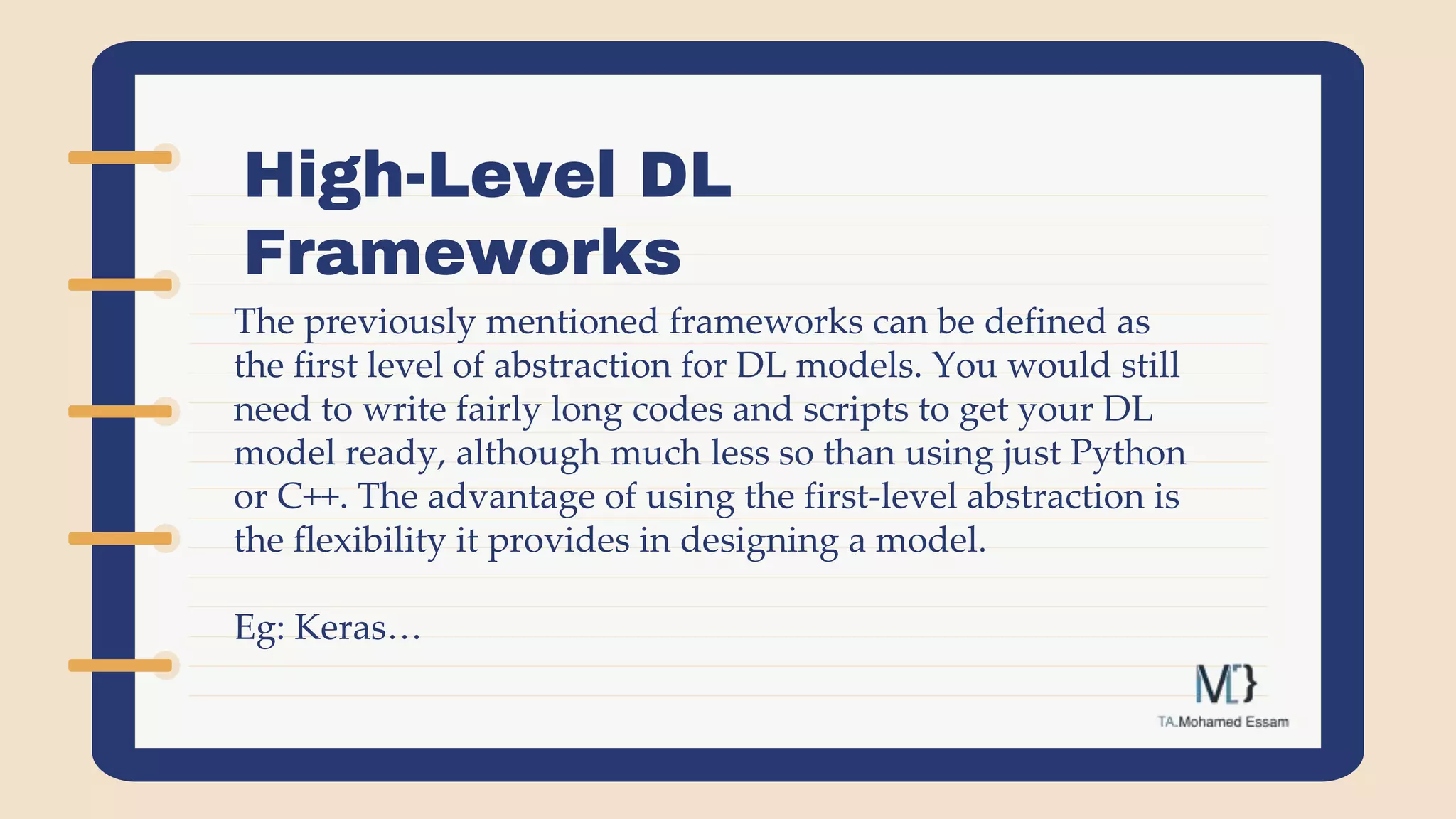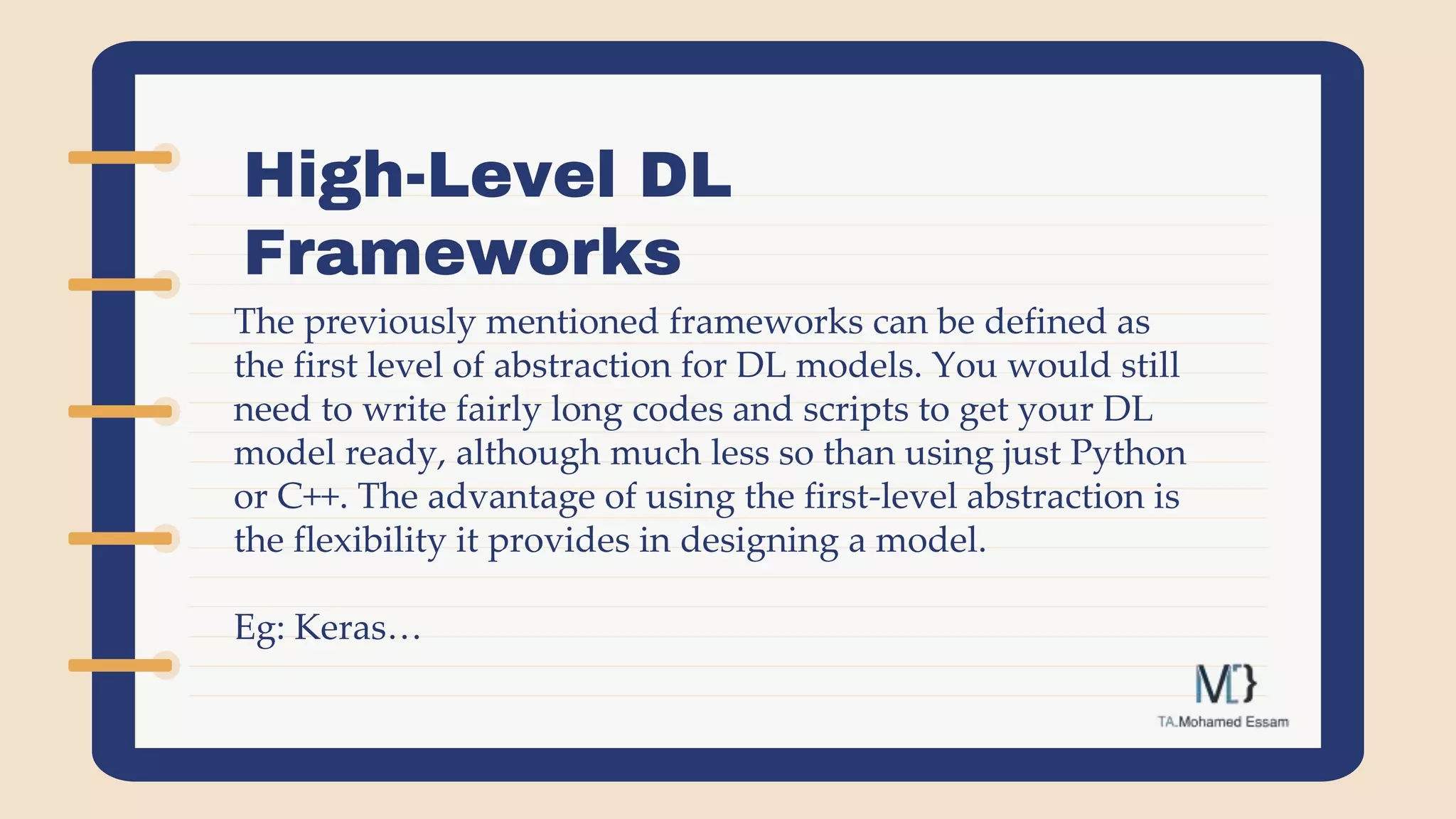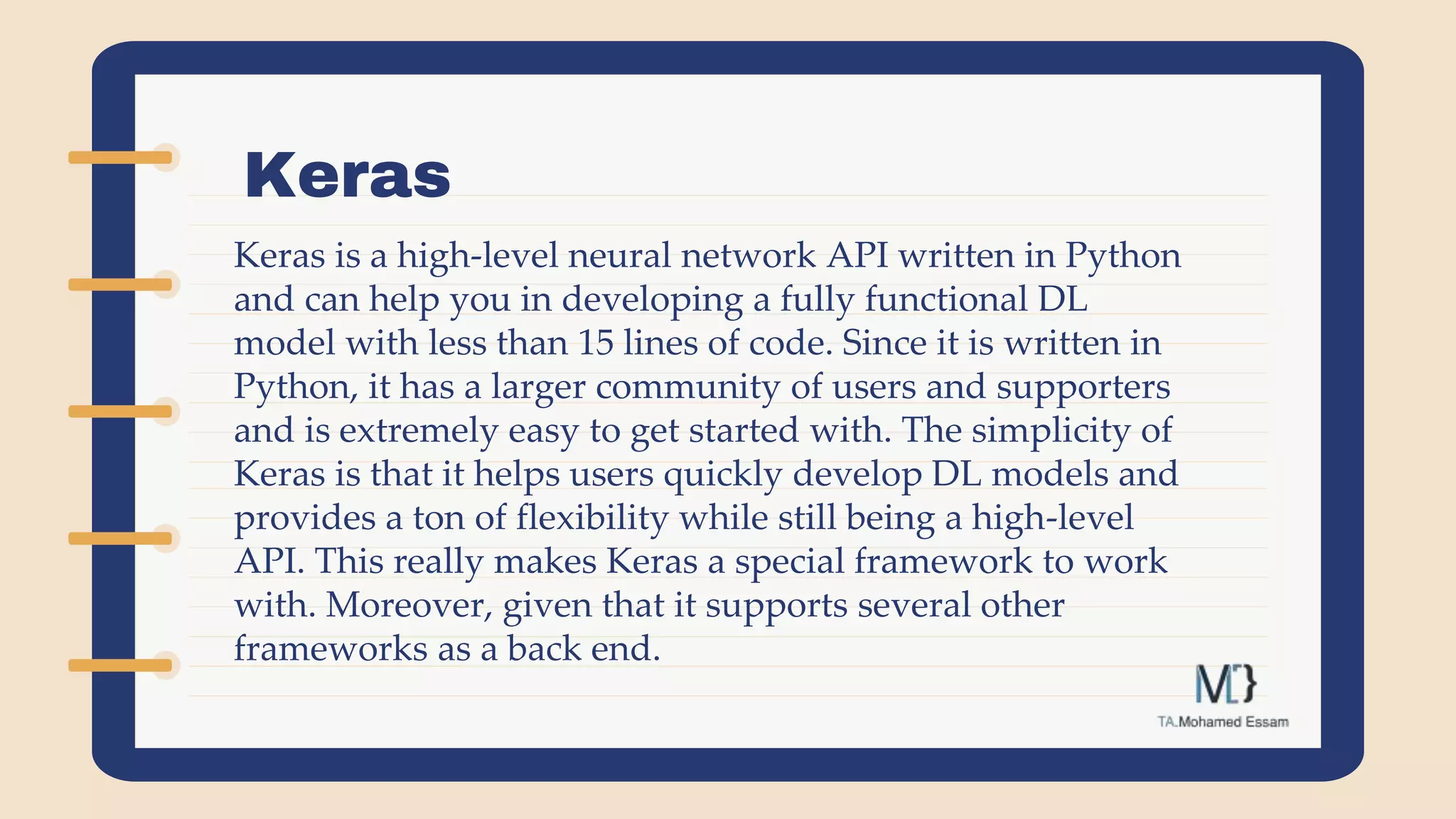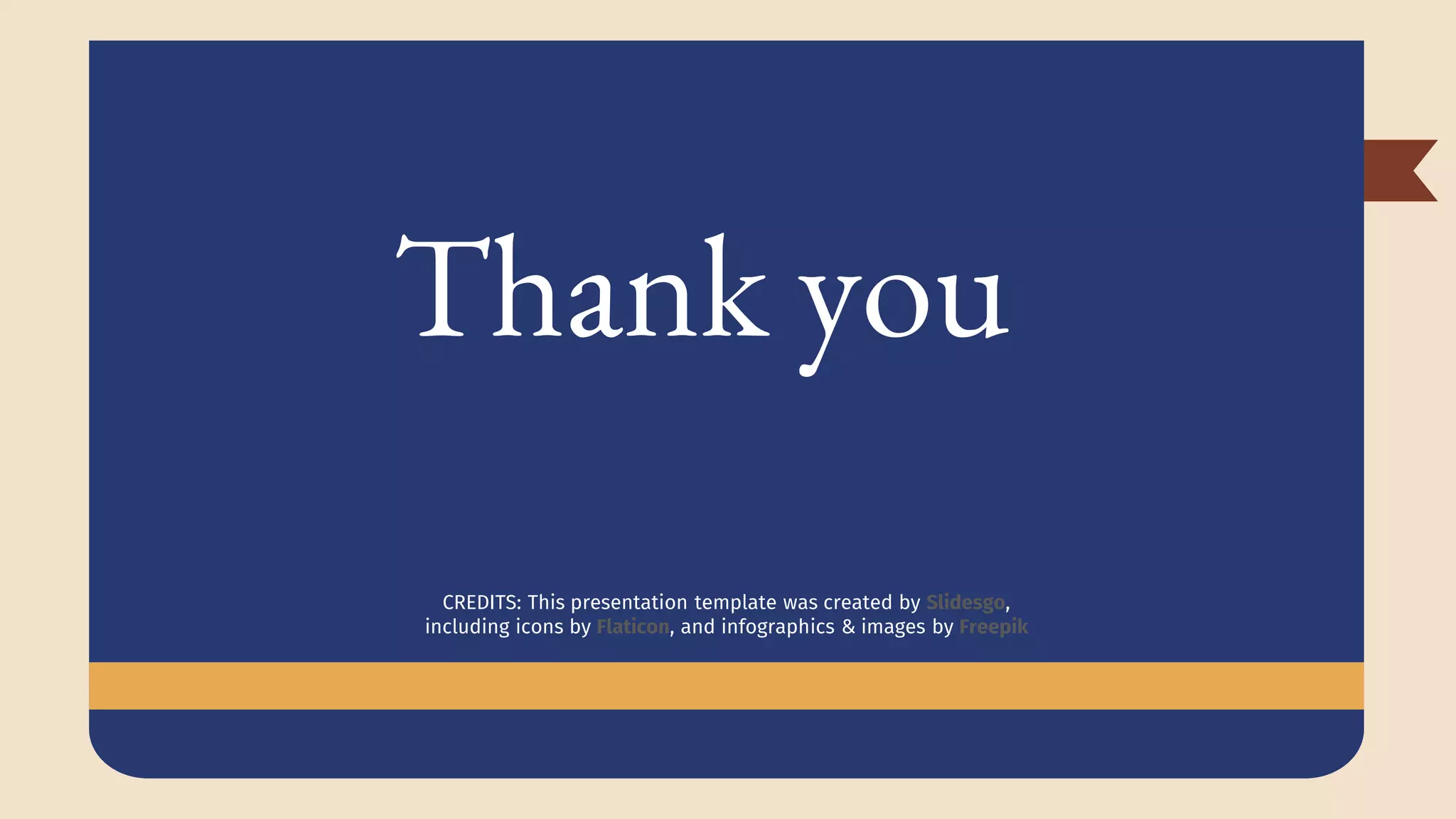The document discusses setting up an environment to develop deep learning (DL) models using Keras and TensorFlow in Python. It explains that Python, TensorFlow, and Keras need to be installed. TensorFlow and Keras can be installed using pip. The document also provides an overview of popular DL frameworks, distinguishing between low-level frameworks like TensorFlow and high-level frameworks like Keras, which allows developing full DL models with less code. Keras is highlighted as a good high-level framework to use due to its simplicity and support for other frameworks as a back-end.
